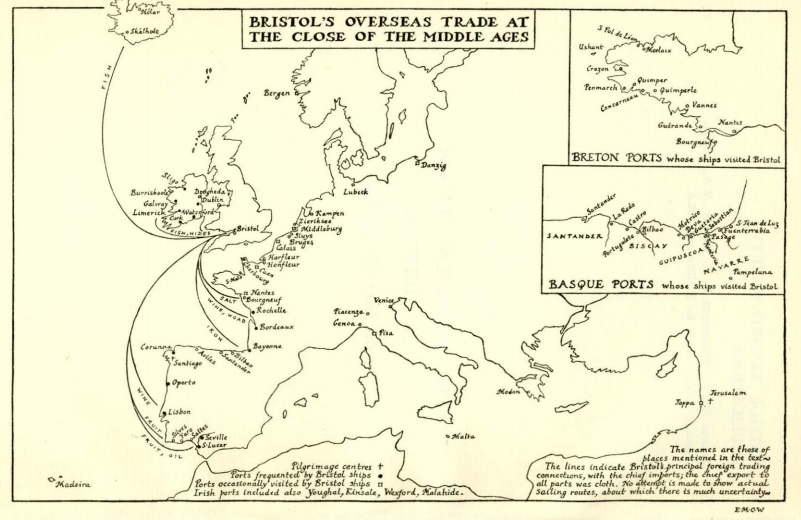 That image above is from The Overseas Trade of Bristol in the Middle Ages, a publication of the Bristol Record’s Society Publications. The BRS is now one of my favorite things, a society dedicated to record keeping. Interestingly, there is one data point in this record that is not really referenced on the map. The passage taken by one ship that landed at Bristol on 24 February 1480. The record for that voyage reads as follows:
That image above is from The Overseas Trade of Bristol in the Middle Ages, a publication of the Bristol Record’s Society Publications. The BRS is now one of my favorite things, a society dedicated to record keeping. Interestingly, there is one data point in this record that is not really referenced on the map. The passage taken by one ship that landed at Bristol on 24 February 1480. The record for that voyage reads as follows:
Fascinating. What that means is a ship registered to the Basque port of Guetaria named the Seint Sebastian, with someone named Lope as her master, sailing from Flanders came to Bristol on 24 February 1480 carrying madder, tar, wainscot and hops. The ship is en route to the south but stops in at Bristol, a half point between Flanders and what is now in northern Spain.
Look at the offloaded cargo. Madder is a plant that gives a red dye. Tar is likely pine tar which was a product of the far eastern reaches of Baltic Hansa. And wainscot (anglicized from the Dutch word wageschot) was measured by the hundreds as we see with that “C” and a fine grade of lumber for interior paneling. And those hops.
Look at the hops record.* Notice that the hops are in identified units. Two bales. Not just some plant matter slung in the corner of the hold. They have a recipient listed: John Cockis. So, it is a shipment and not just a delivery on speculation to be sold on the wharf. It is a priced. Three pounds for the two bales. It is worth less per bale than the madder. And that price relates customs valuation. Which means there was a process for valuing hops. And a customs duty that would apply to their three pounds of value on their importation. All a very formal affair. Very bureaucratic. Very legal. Very normal.
Interesting. Lots to think about with that wee record.
*page 258.

